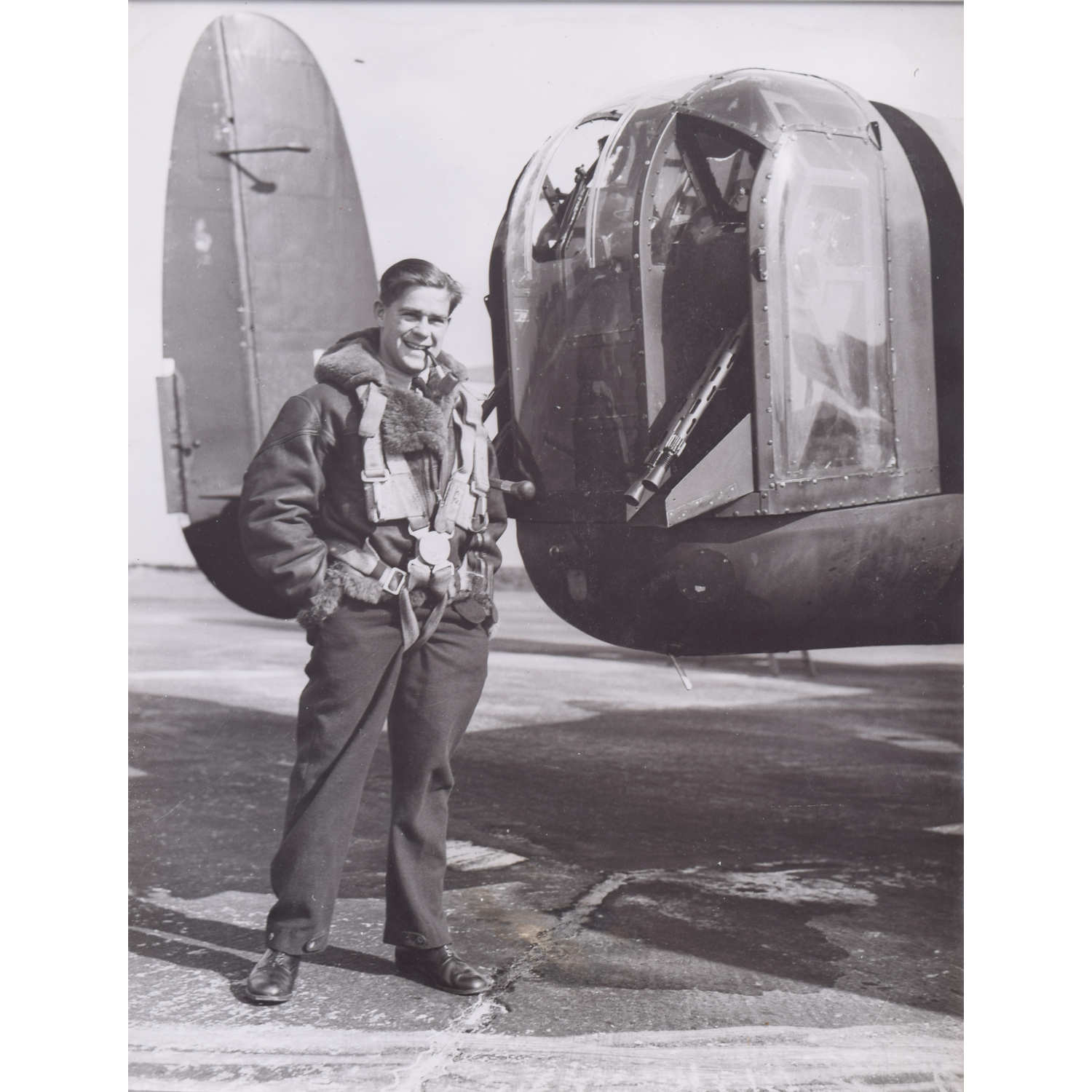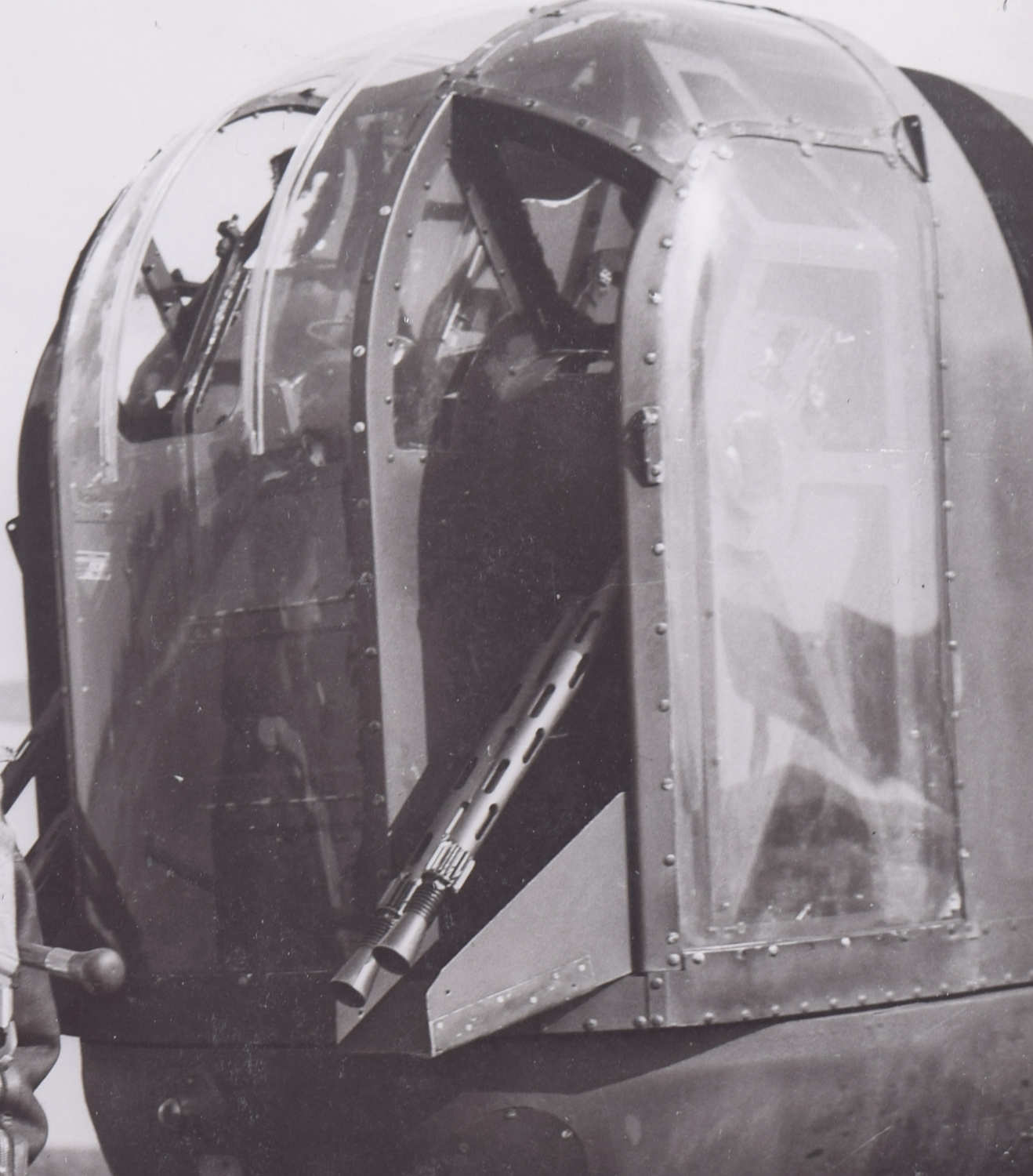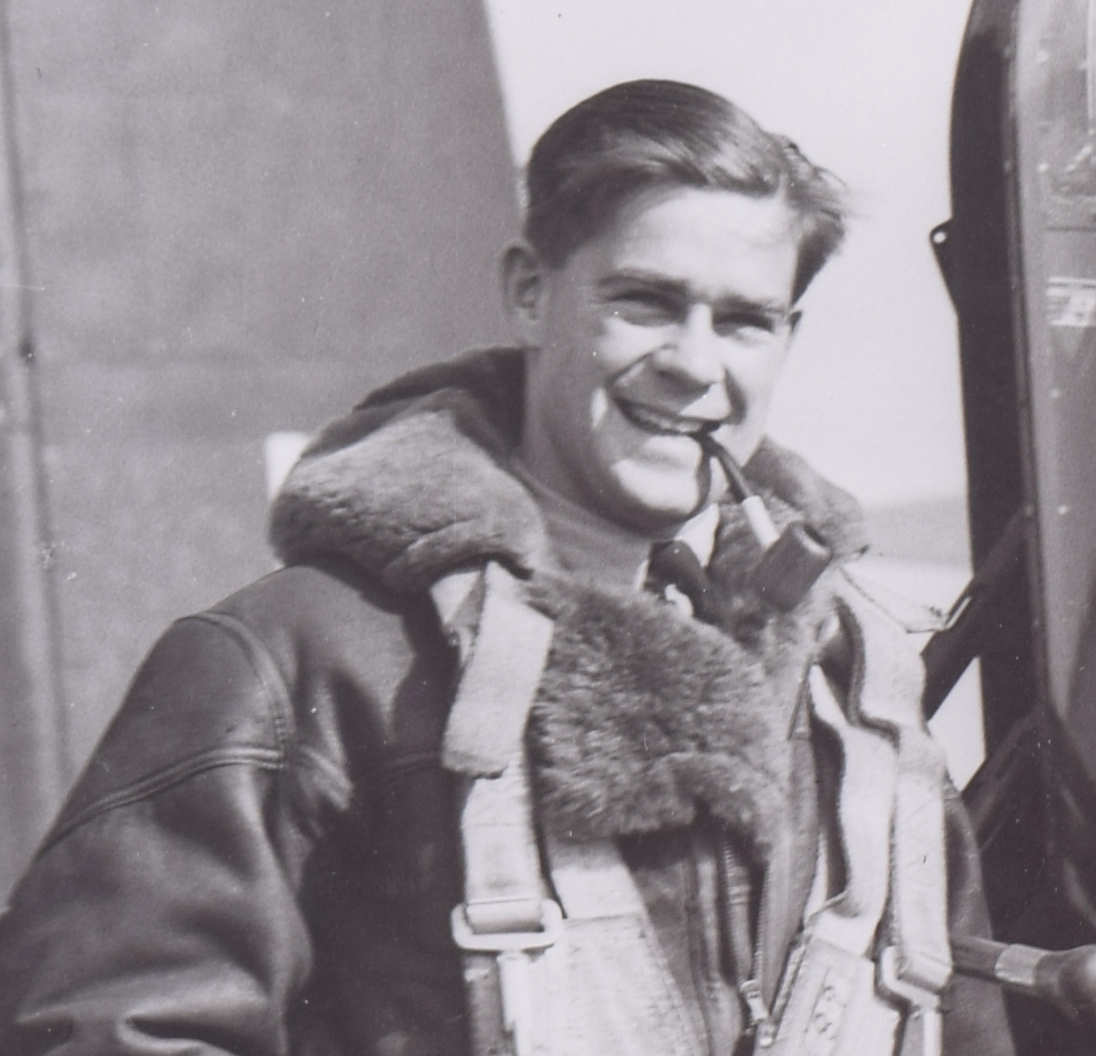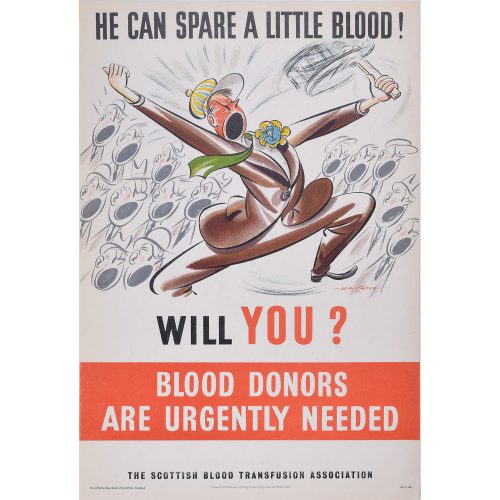Roberts Dunstan DSO – Tail-end Charlie on Lancaster Bomber
Original Silver Gelatin photograph, c. 1943
20 x 15 cm
The sitting-down war played out in the skies suited amputees who wanted to continue killing the enemy. Douglas Bader famously bailed out of his Spitfire over Germany, leaving behind his artificial legs. There were others who flew with artificial legs, including Dunstan.
Dunstan was born in 1922, lying about his age (by three years) in order to join up in June 1940. In January 1941, serving with the Royal Australian Engineers, he was injured in one leg near Tobruk (in Libya) on a night reconnaisance raid. After five operations his leg was amputated; after ten more he was returned to Australia and invalided out of the services in February 1942.
A few months later, he caught sight of a poster recruiting for the RAAF, and volunteered his services, enlisting on 23 June 1942 – having spent some time convincing the RAAF that there were roles that he could undertake successfully. Following training at the RAAF Bombing and Gunnery School he was soon on his way to the UK, sailing on 24 August from Sydney.
He was soon serving at RAF Breighton in Yorkshire with 460 Sqn RAAF as rear gunner in an Avro Lancaster bomber. As he walked to the aircraft he used his crutches; onboard he would crawl to his post in the tail.
On the night of 22/23 October 1943, aboard W4927, his Lancaster left Binbrook for a bombing raid over Germany. Above Kassel, the target, a Lancaster bomber above them dropped its bombs. Two incendiary bombs dropped through W4927; one hitting the flight engineer’s jump seat – beside the pilot – the other falling through the middle of the aeroplane and severing the oxygen supply to the rear and mid-upper turrets – the former being Dunstan’s. A German night fighter chose this moment to attack W4927. Befuddled by lack of oxygen the gunners were unable to shoot, W4927 losing its port elevator and receiving holes in its port wing and fuselage – and one cannon shell went into Dunstan’s rear turret. However the pilot nursed the plane back to England, where it crash landed at either RAF Elsham Wold, or Bisham – sources vary.
On 3/4 November 1943 Dunstan completed his thirtieth mission, to Dusseldorf, the day before his twenty-first birthday. He was gazetted for his DSO on 7 November. In 1944 he returned to Australia and in 1956 was elected to the Victoria State Parliament where he held ministerial posts for water supply, and subsequently for public works.








